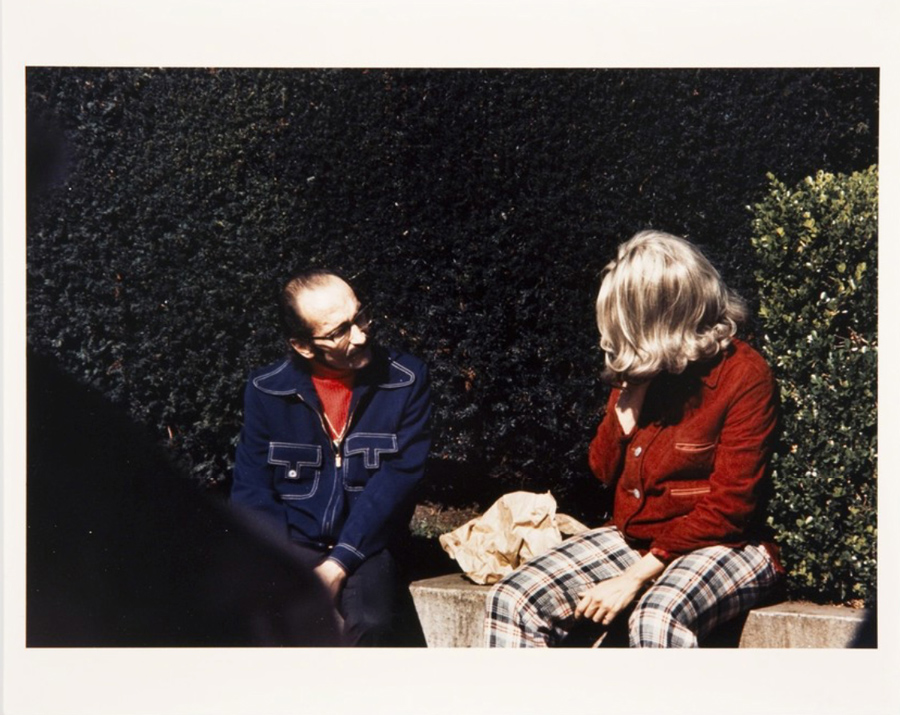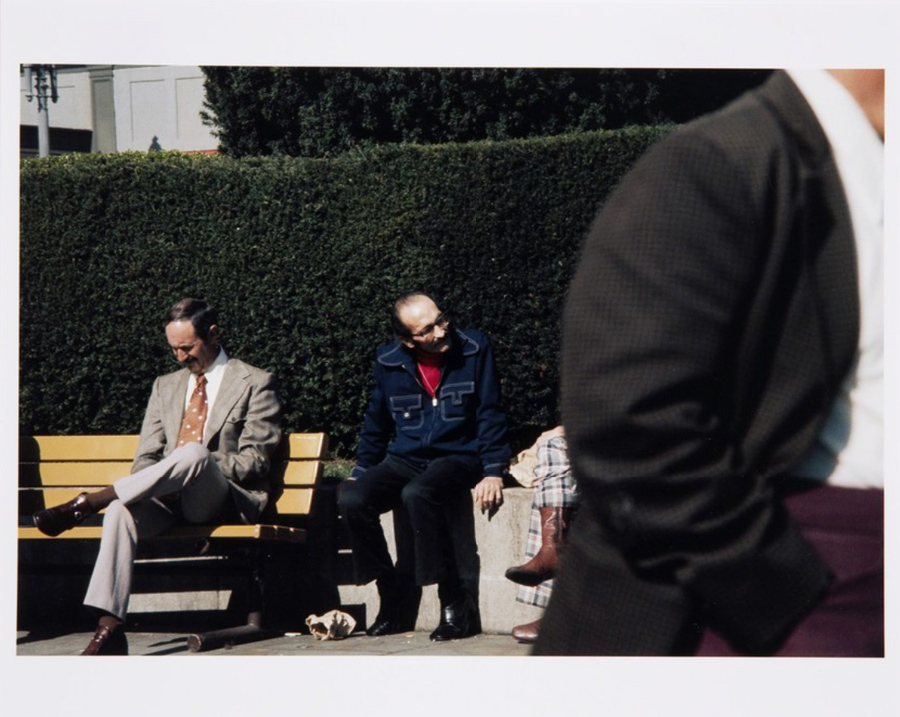
When making trust decisions in economic games, people have some accuracy in detecting trustworthiness from the facial features of unknown partners. […] We observed that trustworthiness detection remained better than chance for exposure times as short as 100 ms, although it disappeared with an exposure time of 33 ms.
{ Experimental Psychology | Continue reading }
photo { Miles Alridge }
psychology, relationships |
September 20th, 2017
 Using a cheap robot, a team of hackers has cracked open a leading-brand combination safe, live on stage in Las Vegas
Using a cheap robot, a team of hackers has cracked open a leading-brand combination safe, live on stage in Las Vegas
A major asthma drugmaker has been quietly investing in coal on the side [Thanks Tim]
The Null Relation between Father Absence and Earlier Menarche
When researchers tried to recruit 30 people for an experiment where all phone notifications (including text and email) would be disabled for a week, they simply couldn’t find the participants.
The key to understanding this is to think about what advertisers want: they don’t want to appear next to pictures of breasts because it might damage their brands, but they don’t mind appearing alongside lies because the lies might be helping them find the consumers they’re trying to target. Facebook has two priorities: growth and monetisation.
Researchers at Facebook realized their bots were chattering in a new language. Then they stopped it.
The real victor was Microsoft, which built an empire on the back of a shadily acquired MS-DOS
16 Ways QR Codes are Being Used in China
George Peter Metesky, better known as the Mad Bomber, terrorized New York City for 16 years in the 1940s and 1950s with explosives that he planted in theaters, terminals, libraries, and offices. [Wikipedia]
Ten minutes difference, and Earth would still be Planet of the Dinosaurs
The Economic Value of Birds
Trees with “Crown Shyness” Mysteriously Avoid Touching Each Other [Thanks Tim]
Cover image orientation in celebrity cookbooks, study
Japan Is Selling Ice Cream That Doesn’t Melt
How Did Pop Music Get So Slow?
The Books We Don’t Understand
Pollution is turning dogs blue in Mumbai [Thanks Brad]
Flying the Birdly Virtual Reality Simulator [Thanks Tim]
every day the same again |
August 22nd, 2017

In what appears to be the first successful hack of a software program using DNA, researchers say malware they incorporated into a genetic molecule allowed them to take control of a computer used to analyze it. […]
To carry out the hack, researchers encoded malicious software in a short stretch of DNA they purchased online. They then used it to gain “full control” over a computer that tried to process the genetic data after it was read by a DNA sequencing machine.
The researchers warn that hackers could one day use faked blood or spit samples to gain access to university computers, steal information from police forensics labs, or infect genome files shared by scientists.
{ Technology Review | Continue reading }
genes, spy & security, technology |
August 10th, 2017

The cost of building the world’s skinniest skyscraper has ballooned so enormously that the 111 W. 57th St. project is facing imminent foreclosure while it’s less than one-quarter complete.
The 82-story skyscraper has risen fewer than 20 stories and is $50 million over budget.
[…]
“Apparently they omitted some very significant items in their budget including cranes, which are very expensive in New York and can run into the millions of dollars”
{ NY Post | Continue reading }
architecture, new york |
July 27th, 2017
 Biologists Use Gene Editing to Store Movies in DNA
Biologists Use Gene Editing to Store Movies in DNA
Scientists build DNA from scratch to alter life’s blueprint
Millennials only have a 5-second attention span for ads
Fish can’t recognise faces if they’re upside down – just like us
The $100 billion per year back pain industry is mostly a hoax
Do Men Overestimate or Women Underreport Their Sexual Intentions?
Pornography trains us to redirect sexual desire as mimetic desire. That is, the sociological theory — and the marketers’ dream — that humans learn to want what they see.
Living near noisy roads could make it harder to get pregnant
Those who used maladaptive strategies like suppressing, avoiding, or denying their feelings, had higher levels of problems associated with stress.
Brain Training Has No Effect on Decision-making or Cognitive Function, Penn Researchers Report
To the French, she explains, conversations are for exchanging points of view, not finding things in common, the goal of conversation for North Americans.
War, space, and the evolution of Old World complex societies [PDF]
The Not-so-secret ingredients of military coups
In the US, young lawyers already don’t get jobs. Because of IBM Watson, you can get legal advice (so far for more or less basic stuff) within seconds, with 90% accuracy compared with 70% accuracy when done by humans. how our lives will change dramatically in 20 years
Like ancient warlords, China’s three biggest airlines have dominated their regional cities: Air China Ltd. controlling Beijing, China Eastern Airlines Corp. holding sway in the financial center of Shanghai, and China Southern Airlines Co. ruling the roost down in export gateway Guangzhou. Until now. Beijing’s New Mega Airport Will Challenge Air China’s Dominance
Jeff Bezos Surpasses Bill Gates as World’s Richest Person
How long would it take for vampires to annihilate humanity
In this paper, we focus on the difference in the way of pulling a toilet paper roll and propose a system that identifies individuals based on features of rotation of a toilet paper roll with a gyroscope.
Can’t Find a Public Bathroom in NYC? Hail This Toilet Van
“The Facts in the Case of M. Valdemar” is a short story by American author Edgar Allan Poe about a mesmerist who puts a man in a suspended hypnotic state at the moment of death. An example of a tale of suspense and horror, it is also, to a certain degree, a hoax, as it was published without claiming to be fictional, and many at the time of publication (1845) took it to be a factual account.
Richard D. James [Aphex Twin] interviews ex. Korg engineer about their collaboration on the monologue, microtuning, geometry and dreams.
McMansion Hell: The Devil is in the Details [Thanks Tim] + How the McMansion Hell blogger fended off a lawsuit threat from real estate site Zillow
every day the same again |
July 27th, 2017

Eye movements of 105 heterosexual undergraduate students (36 males) were monitored while viewing photographs of men and women identified as a potential mate or a potential friend. Results showed that people looked at the head and chest more when assessing potential mates and looked at the legs and feet more when assessing potential friends.
{ Archives of Sexual Behavior | Continue reading }
photo { Michelle Pfeiffer photographed by Jim Britt, 1979 }
eyes, relationships |
July 10th, 2017

Neurobiological research on memory has tended to focus on the cellular mechanisms involved in storing information, known as persistence, but much less attention has been paid to those involved in forgetting, also known as transience. It’s often been assumed that an inability to remember comes down to a failure of the mechanisms involved in storing or recalling information.
“We find plenty of evidence from recent research that there are mechanisms that promote memory loss, and that these are distinct from those involved in storing information,” says co-author Paul Frankland.
One recent study in particular done by Frankland’s lab showed that the growth of new neurons in the hippocampus seems to promote forgetting. This was an interesting finding since this area of the brain generates more cells in young people. The research explored how forgetting in childhood may play a role in why adults typically do not have memories for events that occurred before the age of four years old.
{ University of Toronto | Continue reading }
art { Masao Mochizuki, The Air Power of the World, 1976 }
memory |
July 10th, 2017

Chang et al. investigated the well-known asymmetry of the scrotum in man and showed that in right-handed subjects the right testis tended to be higher, whereas the converse applied in left-handed subjects.
{ Nature | PDF }
science |
June 28th, 2017
psychology |
June 25th, 2017
 You could live in Canada and U.S. at the same time: House straddling the border is on the market for $109,000
You could live in Canada and U.S. at the same time: House straddling the border is on the market for $109,000
The biggest challenge for Justin Trudeau’s forthcoming legal recreational marijuana market is a shortage of pot
Researchers have found a way to root out identity thieves by analyzing their mouse movements with AI [study]
Visual Face-preference in the Human Fetus?
We find that the shock of having acne is positively associated with overall grade point average in high school, grades in high-school English, history, math, and science, and the completion of a college degree.
People are often encouraged to only present the best aspects of themselves at interview so they appear more attractive to employers, but what we’ve found is that high-quality candidates — the top 10% — fare much better when they present who they really are. Unfortunately, the same isn’t true for poorer quality candidates who can actually damage their chances of being offered the job by being more authentic.
What triggers that feeling of being watched?
From 2014 to mid-2016, 75 people have died while attempting selfie in 52 incidents worldwide. Mean age of the victims was 23.3 and 82% were male.
Which individuals become fatter when they practice exercise?
Why Urine Doesn’t Work To Treat Jellyfish Stings
Why Is the Speed of Light So Slow?
Can falling bullets kill you?
Celebration of genius generals encourages the delusion that modern wars will be short and won quickly, when they are most often long wars of attrition
The Mutilated Currency Division
Bitcoin is on the verge of losing its position as the dominant virtual currency. The value of Ether has risen an eye-popping 4,500 percent since the beginning of the year. [NYT]
Personalized ads in the real world
“We found that people remember ads with sexual appeals more than those without, but that effect doesn’t extend to the brands or products that are featured in the ads”
Google is the internet’s largest ad company. So why is it building an ad blocker? The new Chrome feature, slated to be rolled out next year, won’t block all ads. Rather, it will block ads that Google considers particularly intrusive.
Google will no longer mine your emails for advertising data
Investors think Vice is worth more than the NYT, WaPo and FT combined. Not sure that assessment will age well.
Goldie may have confirmed that Banksy is Massive Attack’s Robert Del Naja
Pythagoras’s best puzzles
In the most comprehensive study of egg shapes to date, scientists say that the best predictor of long or pointy eggs is a bird’s flying ability. [Science | NYT]
Nondestructive determination of watermelon flesh firmness by frequency response
Eugene Schieffelin was a pharmacist who lived in the Bronx. He was an eccentric Anglophile and a Shakespeare aficionado. As deputy of the American Acclimatization Society of New York, Schieffelin, it is believed, latched onto the goal of bringing every bird mentioned in the works of Shakespeare to Central Park.
“We are aware of Oksana Zhnikrup’s work and have a license to use it for Mr Koons’s work.”
Restoring Yves Klein’s “Blue Monochrome” (1961)
Egon Schiele standing in front of a full-length mirror in his studio
Popsicles Made From 100 Different Polluted Water Sources
A vending machine in Russia for buying Likes for your Instagram pics
every day the same again |
June 25th, 2017


The urge to be permanently blind is an extremely rare mental health disturbance. The underlying cause of this desire has not been determined yet. […] Only 5 people with an urge to be blind were found to participate in the study (4 female, 1 male). […]
The hypothesis that people with a desire for blindness suffer from a significantly higher visual overload in activities of daily living than visually healthy subjects was confirmed.
{ Case Reports in Ophthalmology | Continue reading }
art { Douglas Huebler, Variable Piece #44 / Global, 1971 | more }
eyes |
June 19th, 2017

{ Lynn Hershman Leeson, Roberta and Blaine in Union Square, 1975 }

{ Lynn Hershman Leeson, Roberta and Blaine in Union Square (Close Up), 1975 }

{ Lynn Hershman Leeson, Roberta and Blaine in Union Square, Roberta Missing, 1975 }

{ Lynn Hershman Leeson, Roberta and Blaine in Union Square, Blaine and Transcription, 1975 }
photogs |
June 19th, 2017
National Security Council officials have strategically included Trump’s name in “as many paragraphs as we can because he keeps reading if he’s mentioned,” according to one source, who relayed conversations he had with NSC officials.
{ Reuters | Continue reading }
related { How Trump gets his fake news }
U.S., buffoons |
May 17th, 2017

When the National Security Agency began using a new hacking tool called EternalBlue, those entrusted with deploying it marveled at both its uncommon power and the widespread havoc it could wreak if it ever got loose.
Some officials even discussed whether the flaw was so dangerous they should reveal it to Microsoft, the company whose software the government was exploiting, according to former NSA employees who spoke on the condition of anonymity given the sensitivity of the issue.
But for more than five years, the NSA kept using it — through a time period that has seen several serious security breaches — and now the officials’ worst fears have been realized. The malicious code at the heart of the WannaCry virus that hit computer systems globally late last week was apparently stolen from the NSA, repackaged by cybercriminals and unleashed on the world for a cyberattack that now ranks as among the most disruptive in history.
{ Washington Post | Continue reading }
screenshot { Ben Thorp Brown, Drowned World, 2016 }
spy & security |
May 17th, 2017

In a mossy forest in the western Andes of Ecuador, a small, cocoa-brown bird with a red crown sings from a slim perch. […] Three rival birds call back in rapid response. […] They are singing with their wings, and their potential mates seem to find the sound very alluring. […]
This is an evolutionary innovation — a whole new way to sing. But the evolutionary mechanism behind this novelty is not adaptation by natural selection, in which only those who survive pass on their genes, allowing the species to become better adapted to its environment over time. Rather, it is sexual selection by mate choice, in which individuals pass on their genes only if they’re chosen as mates. From the peacock’s tail to the haunting melodies of the wood thrush, mate choice is responsible for much of the beauty in the natural world.
Most biologists believe that these mechanisms always work in concert — that sex appeal is the sign of an objectively better mate, one with better genes or in better condition. But the wing songs of the club-winged manakin provide new insights that contradict this conventional wisdom. Instead of ensuring that organisms are on an inexorable path to self-improvement, mate choice can drive a species into what I call maladaptive decadence — a decline in survival and fecundity of the entire species. It may even lead to extinction.
{ NYT | Continue reading }
art { Cy Twombly, Achilles Mourning the Death of Patroclus, 1962 }
birds, evolution, science |
May 13th, 2017

























